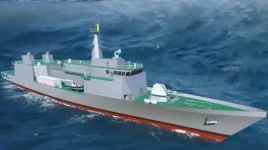- Views: 969
- Replies: 14

In a significant development highlighting growing military cooperation, the Philippine Marine Corps (PMC) recently briefed their US Marine Corps (USMC) counterparts on the BrahMos anti-ship cruise missile system.
The briefing occurred during Exercise KAMANDAG, an annual bilateral exercise designed to enhance interoperability and cooperation between the two forces.
The BrahMos missile, a joint venture between India and Russia, is renowned as one of the world's most potent anti-ship cruise missiles. Its supersonic speed, precision, and destructive power make it a formidable asset for coastal defence.
The Philippines' acquisition of the BrahMos system marks a major step in modernizing its armed forces and strengthening its maritime security, particularly in the contested South China Sea.
During the briefing, the PMC detailed the missile's operational capabilities, including its range of up to 290 kilometers and its ability to be launched from various platforms.
The USMC gained insights into the missile's potential role in joint operations and its strategic implications for regional security. This exchange of information underscores the growing importance of missile defence and precision strike capabilities in modern warfare.
Exercise KAMANDAG, meaning "Kasaligan at Malasakit na Pag-andar ng mga Alay sa Bayan" (Reliable and Caring Performance of Offerings to the Nation), serves as a platform for both countries to enhance their defence capabilities through various training scenarios, including amphibious operations, humanitarian assistance, and disaster response.
This year's exercise provided a valuable opportunity for the PMC to showcase its growing capabilities and familiarize US forces with the integration of the BrahMos missile system into its arsenal.
The briefing on the BrahMos missile system comes at a time of heightened tensions in the South China Sea, where territorial disputes remain a significant security concern. The Philippines' acquisition of this advanced missile system is seen as a key deterrent and a demonstration of its commitment to safeguarding its maritime sovereignty.


